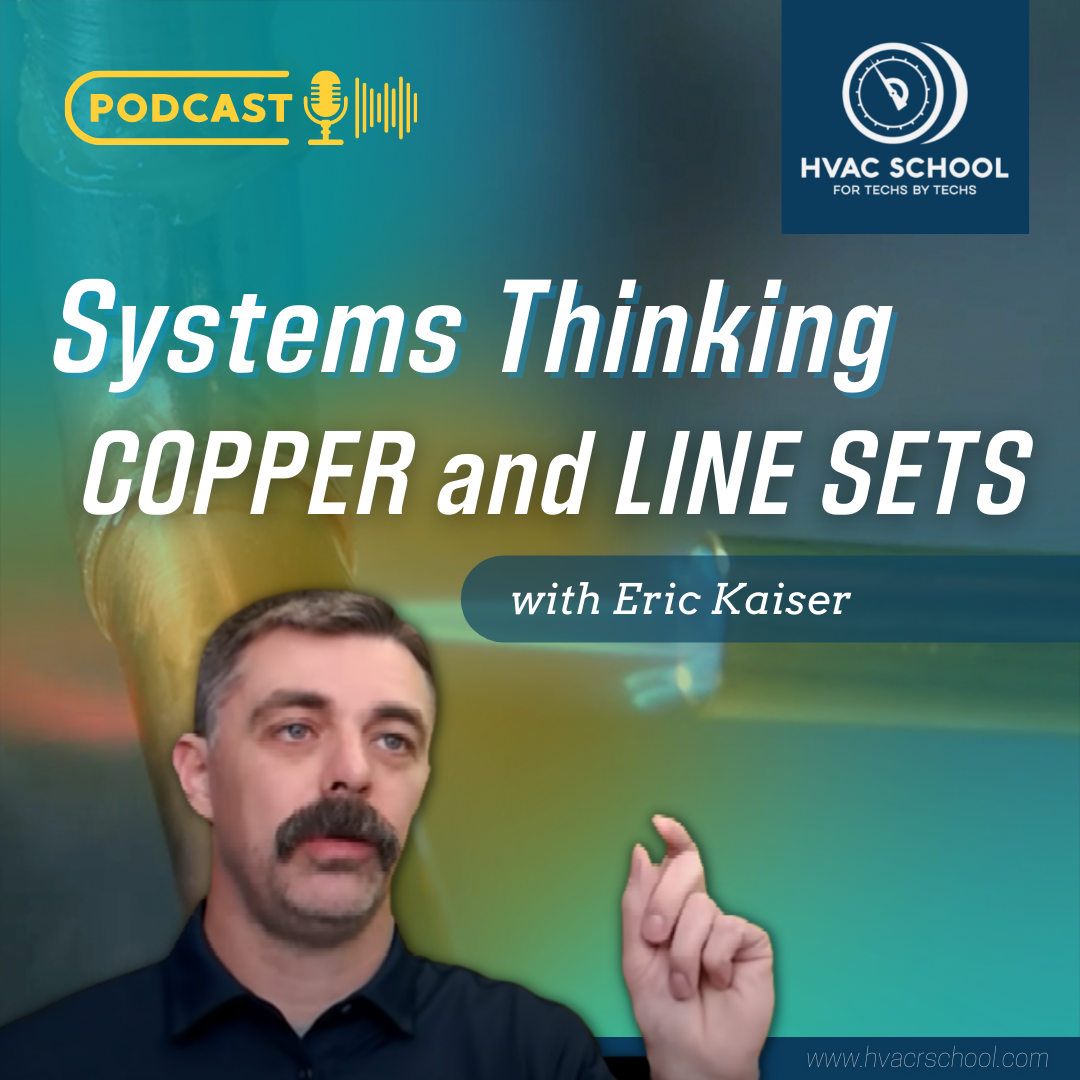Systems Thinking – Copper & Line Sets

Eric Kaiser returns to the podcast to talk about how copper, piping, and line sets play into systems thinking.
Nowadays, we have to think about POE and PVE oil, and we need to design line sets in a way that assists with oil carry while preventing liquid refrigerant migration. The height of the evaporator relative to the condenser is a major factor to consider during the design phase.
Especially when chases are run underground, we need to watch for possible threats to the copper. Water softener discharge and excess pool water may damage the copper over time, and systems should be designed to keep line sets away from those. In many cases, Florida chases are sealed with mastic, which doesn’t prevent water from getting in (but does prevent rodents and insects from entering the home.
Flowing nitrogen is one of the best practices you can do while brazing. Nitrogen displaces oxygen, which contributes to oxidation and produces scale. When cutting copper, you will also want to make sure that you don’t get copper shavings inside the tube. The pressure test is also an important step for leak detection. Following the manufacturer’s instructions, pressurize the system and apply a liquid leak reactant (bubbles) to joints and other common leak points.
It’s a good idea to have at least one line drier in the system, and it should be able to work both ways in a heat pump system. Ideally, the line drier should be in a serviceable location, as it will be easier to detect restrictions when it’s on the line set.
Eric and Bryan also discuss:
- Air and vapor barriers
- Long line guidelines
- Underground chase depth
- Derate values
- Controversial reaming/deburring practices
- Line drier best practices
If you have an iPhone, subscribe to the podcast HERE, and if you have an Android phone, subscribe HERE.
Check out our handy calculators HERE.
Author:










Comments
To leave a comment, you need to log in.
Log In